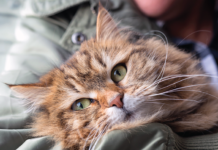How can you possibly go on living without your cat – the beloved best friend with whom youve shared your life for the past 10 or 15 years? That is one of the challenging and possibly unanswerable questions that loving and conscientious cat owners must ponder when their veterinarian suggests that they might want to consider euthanasia. The Good Death. The term euthanasia is derived from two Greek Bev Caldwell 288 words – eu, which means good, and thanatos, which means death. In a report published in 2001, the American Veterinary Medical Association (AVMA) defined this “good death” as follows: “Euthanasia is the act of inducing humane death in an animal. It is our responsibility as veterinarians and human beings to ensure that if an animals life is to be taken, it is done with the highest degree of respect, and with an emphasis on making the death as painless and distress-free as possible.” “All cat owners should know the facts about euthanasia, which is a very complicated issue,” says Fred Scott, DVM, PhD, interim director of Cornell Universitys Feline Health Center and the editor-in-chief of CatWatch. “We all want to spare our animals as much suffering as possible, and in situations where a cat is seriously ill and in pain and weve run out of treatment alternatives, the euthanasia option can be very helpful. But its always both a blessing and a curse – a blessing that we can do it in order to relieve an animals suffering, but a curse in that we have to make the decision.” The Preliminaries. In most cases, there is a sound and genuinely humane reason for considering the procedure. The cat may have a chronic, progressive, recurrent disease for which all treatment options have been exhausted. It may be experiencing end-stage organ failure that, after an indefinite period of pain and suffering, will inevitably be fatal. It has developed a neurologic condition that makes it extremely difficult to care for. Or it has been hit by a car and injured beyond repair. Although a veterinarian may point out that an injury or disease condition would justify euthanasia, the owners authorization for the procedure is always required. (Dr. Scott advises that cats should always be microchipped or wearing ID tags so that their owners can be reached in case the animal does wander away from home and suffer a life-threatening accident.) After signing the authorization, the owner can usually elect whether to be present during the procedure, to view the cats remains afterward or to bid farewell to the animal before the procedure is begun. “I always prefer to offer owners as many options as possible,” says Dr. Scott. “If they want to be present during the procedure, I have no problem with that. “If there are children involved, I strongly suggest that parents discuss it with them beforehand. Avoid using euphemisms such as putting to sleep, because such terms can be very confusing to youngsters. If you let them know exactly whats going on and why, then its fine if the whole family is present. Unless a severely traumatized animal is involved, euthanasia is almost always an elective procedure, so the family can prepare for it together ahead of time.” Also prior to the procedure, owners are usually asked about the animals remains. The owners may want to take the euthanized animals body home with them and personally see to its cremation or burial, or they may choose to have the veterinary clinic make the arrangements. Either way, if cremation is chosen, owners can opt to have the ashes returned to them. The Procedure. Euthanasia is usually done by a veterinarian; in some cases, it may be performed by a trained technician under the veterinarians supervision. The procedure involves a lethal injection of a barbiturate anesthetic (sodium pentobarbitol), which, according to the AVMA, has the ability to induce loss of consciousness and death without causing the pet any pain, distress, anxiety or apprehension. Sodium pentobarbitol is known to act rapidly and reliably. Some vets may give the patient a mild sedative prior to administering the lethal injection. The drug overdose will quickly cause the animals heartbeat to slow down and stop. Its blood circulation will cease, its brain will stop functioning and it will stop breathing. “In virtually all cases, the pet will lose consciousness and simply drift peacefully and painlessly away within a very short time, a matter of seconds,” says Dr. Scott. Concluding Business. Veterinarians are typically very sensitive to the emotional needs of owners following euthanasia. “Most veterinarians would prefer euthanasia to take place at a quiet time of day in the clinic,” Dr.Scott explains, “so that they can allow the owner to be in the room and take as much time with their cat as needed after the procedure. And the owner, who is grieving, wont have to exit through a busy waiting room. In this regard, most veterinarians are as adaptable and compassionate as possible.” Regarding the payment of fees by grieving owners for a euthanasia procedure, Dr. Scott explains: “Although the procedure itself is reasonably priced, it cannot be done for free. But veterinarians will try to handle this in as sensitive a way as possible.” The death of a beloved cat is never easy. Grief, regret, anger, uncertainty, sadness and/or a feeling of emptiness may accompany the loss. But remember to allow yourself time to grieve. A new cat will not replace your deceased pet in your affections or your heart, but can eventually help ease the pain of the loss. Adopting a needy pet can also be a loving tribute to your beloved cat.



